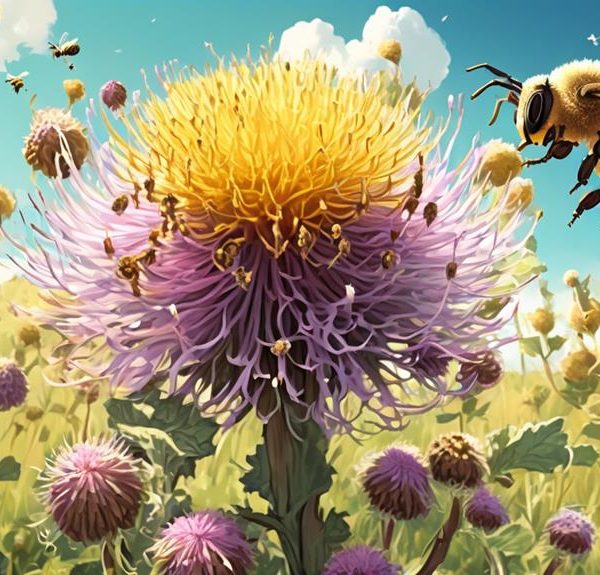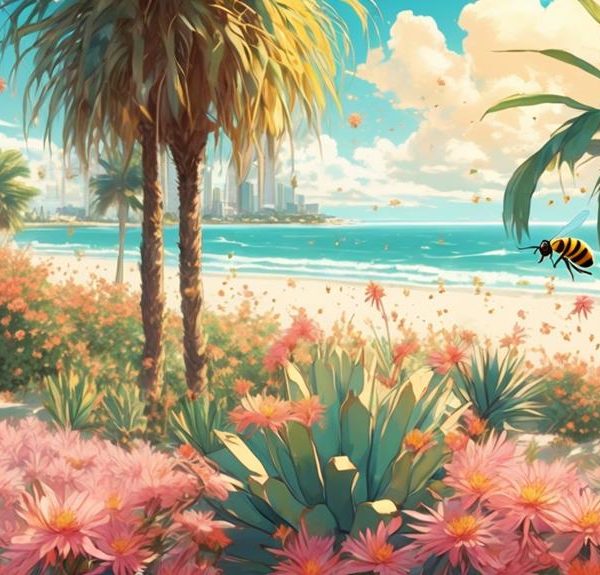Marvel at the intricate relationship between bees and buttercups, as we uncover the surprising science behind their attraction.
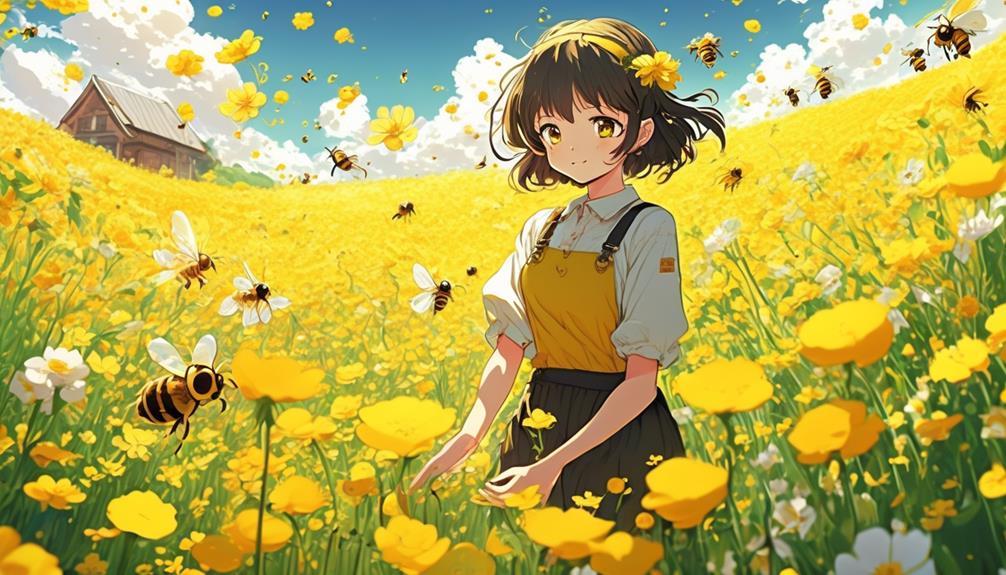
Do Bees Like Buttercup Flowers
You might think bees aren't particularly drawn to buttercup flowers due to their glossy petals and lack of nectar. However, it's not as simple as that.
As you explore the intriguing relationship between bees and buttercups, you'll find that the science is more nuanced than it first appears. How does a buttercup's unique petal structure impact a bee's attraction? What role do ultraviolet patterns invisible to the human eye play?
We're about to embark on a fascinating journey into the world of bees and buttercups, revealing unexpected aspects that will challenge your initial assumptions.
Key Takeaways
- Bees are attracted to buttercup flowers due to their yellow color, nectar-rich centers, and reflective petals.
- Buttercups provide both nectar and pollen, making them a valuable food source for bees.
- The relationship between bees and buttercups is based on symbiosis and mutualism, benefiting both parties.
- Buttercups play a critical role in bee pollination, contributing to genetic variation and biodiversity maintenance.
Understanding Bees' Pollination Preferences
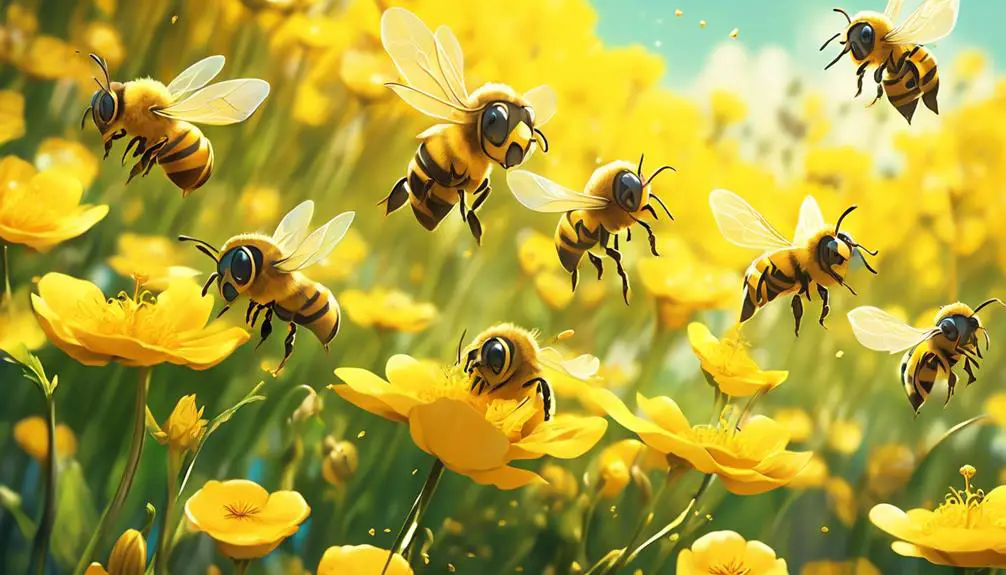
In examining bees' pollination preferences, it's crucial to comprehend that these industrious insects demonstrate a remarkable inclination towards certain flowers, like the vibrant buttercup, for specific reasons grounded in their innate survival instincts and ecological roles.
You see, bees aren't arbitrarily buzzing from blossom to blossom. They're driven by the necessity to gather nectar and pollen for their survival and the propagation of their colonies. Buttercups, with their radiant yellow petals and nectar-rich centers, are a prime target. Their vivid hue and sweet scent are like beacons to bees, drawing them in with the promise of a substantial nutritional payoff.
Moreover, the architecture of a buttercup is particularly suited to a bee's anatomy. The pollen grains are conveniently accessible, allowing the bees to efficiently collect and transport these nutrient-dense particles back to their hives. Simultaneously, this benefits the buttercup by facilitating cross-pollination and thereby ensuring the plant's reproduction and survival.
An understanding of these preferences is essential for bee conservation efforts. By cultivating a garden with the right flowers, you can provide a valuable resource for local bee populations, thereby aiding in their preservation and the overall health of your local ecosystem.
Buttercup Flowers: A Brief Overview
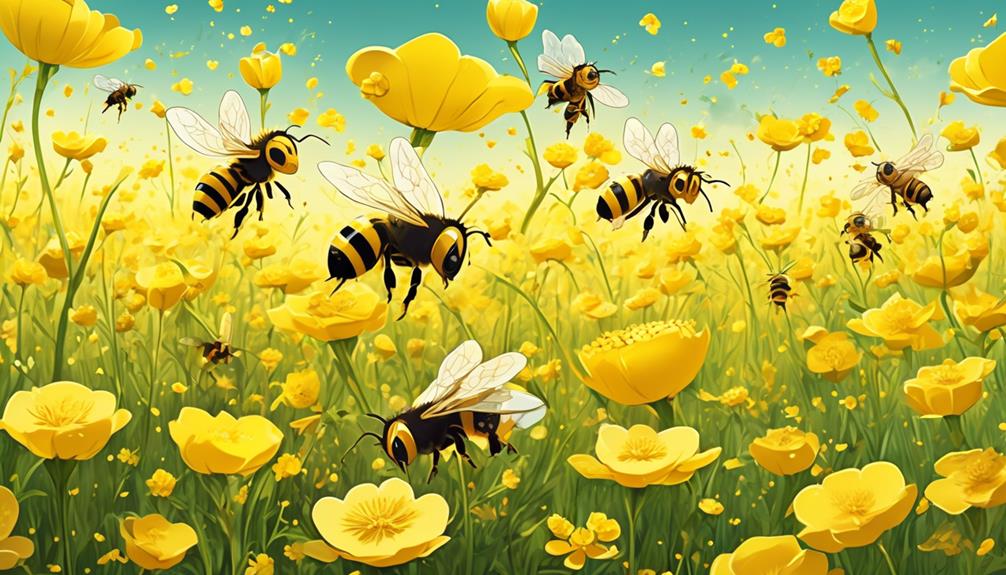
Often overlooked, buttercup flowers are more than just a pretty face in the botanical world; they're a vital part of the ecosystem, providing critical sustenance to bees and various other pollinators. As you delve deeper into the world of buttercups, you'll find that these flowers aren't just visually appealing but also scientifically fascinating.
Belonging to the Ranunculaceae family, buttercups encompass about 400 species worldwide. They're known for their distinctive glossy, yellow petals which, interestingly, owe their shine to layers of air beneath the petals' surface. This unique feature acts as a visual cue, attracting pollinators like bees.
What's more, buttercups produce both nectar and pollen, making them a dual-source of nutrition for bees. The nectar offers sugars for energy, while the pollen provides proteins and fats. Additionally, buttercups possess a unique pollination strategy. Their anthers mature before the stigma, preventing self-pollination and ensuring cross-pollination, which is crucial for genetic diversity.
Moreover, the flowering period of buttercups aligns perfectly with the active period of bees, further enhancing their relationship. So, while buttercup flowers may seem simple, their ecological significance shouldn't be underestimated. They're a vital link in the chain of pollination that keeps our ecosystem buzzing.
Bees and Buttercups: A Scientific Perspective
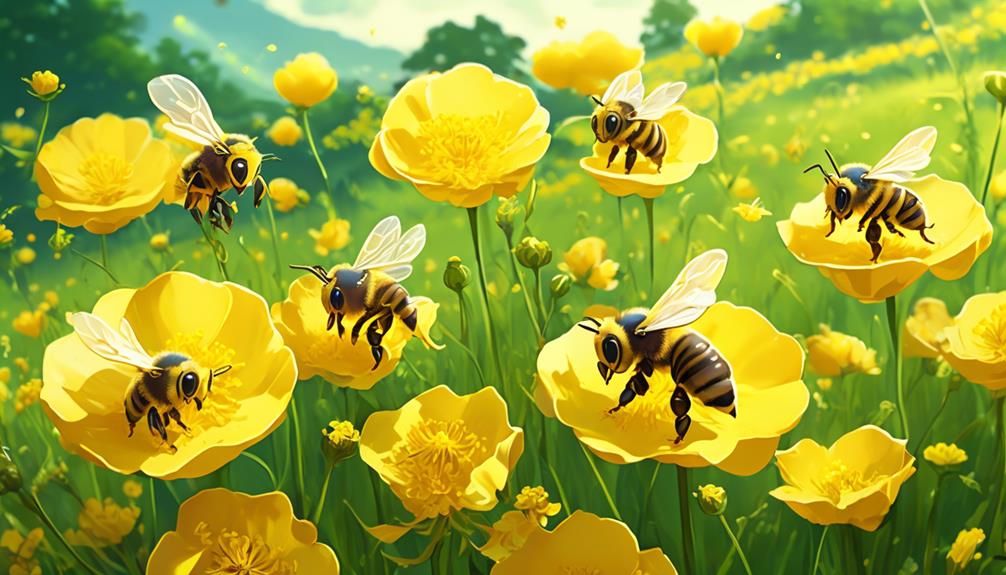
You'll frequently find bees buzzing around buttercup fields, a scenario that underscores a complex, yet fascinating, scientific relationship between these two seemingly disparate entities. This relationship is grounded in the principles of symbiosis and mutualism, with each party benefiting from the other.
As a beekeeper or a nature enthusiast, you may be wondering how this relationship works. Bees, in their quest for nectar, land on buttercup flowers. The bright yellow color of buttercups, their specific petal shape and unique scent, attract bees. The flower's structure makes it easy for bees to access the nectar, simultaneously coating the bees' bodies with pollen.
This pollen then gets transported to other buttercup flowers, facilitating cross-pollination. It's an ingenious method of reproduction for the plant species, with bees acting as unwitting couriers. Through this process, the diversity and spread of buttercup populations are enhanced.
For bees, the nectar is a critical energy source, packed with sugars. It's also a primary ingredient for producing honey. So, while bees help buttercups to reproduce, the flowers provide nutrition for the bees and their colonies. This interplay is a wonderful example of nature's balance, a delicate dance of give-and-take that ensures survival for both parties.
The Role of Buttercups in Bee Pollination
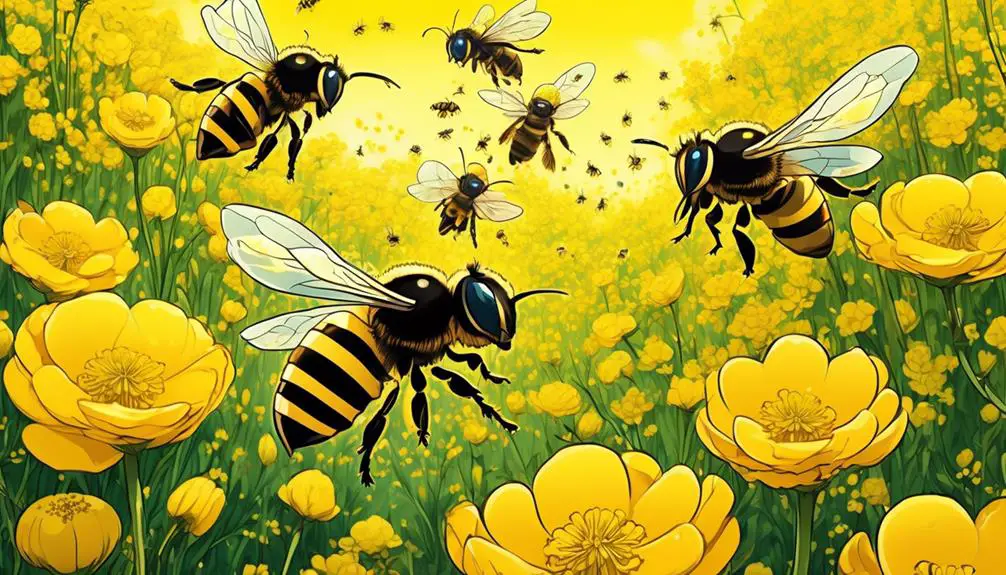
Undeniably, buttercups play a critical role in bee pollination, serving as an attractive and accessible source of nectar, while also leveraging bees for their reproductive process. You see, buttercups' vibrant yellow color and radiant petals act as a lure, drawing bees into their center. They've got an edge here – their high reflectivity across the visual spectrum, including UV light, which bees can see.
Once a bee lands on a buttercup, it's a win-win. The bee gets to feed on the sweet nectar, and the flower gets its pollen transferred. This cross-pollination is crucial for the buttercup's reproduction, ensuring a variation in the gene pool, and subsequently, the survival of the species.
To emphasize this symbiotic relationship, let's examine this table:
Role | Benefit |
|---|---|
Buttercup | Cross-pollination leading to genetic variation |
Bee | Access to nectar, a vital food source |
Ecosystem | Maintenance of biodiversity |
Agriculture | Crop pollination and honey production |
You can't deny it; this relationship between bees and buttercups is a beautiful display of nature's interconnectivity. It's a testament to the intricate balance that sustains our ecosystems and, by extension, our own survival.
Enhancing Bee Attraction to Buttercups
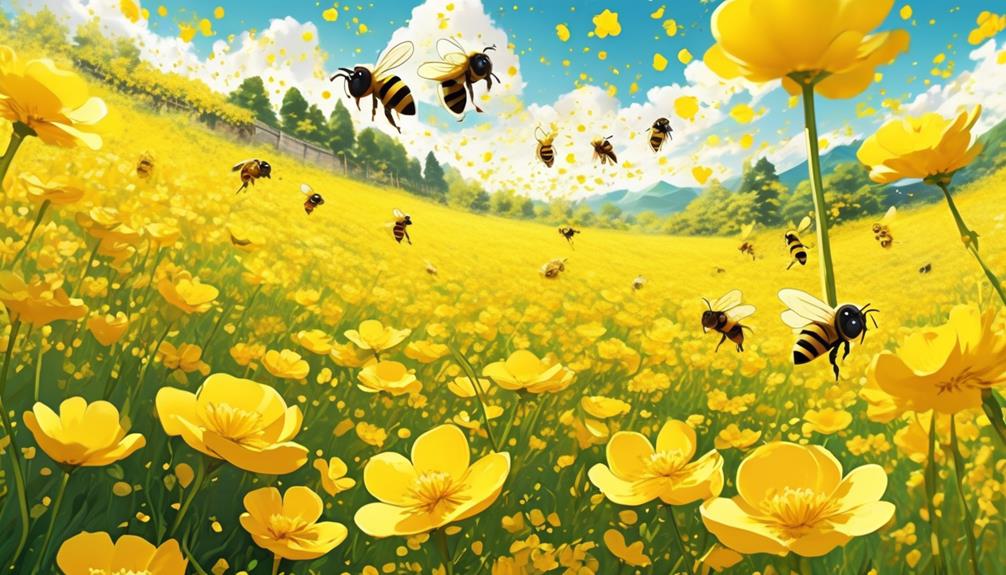
To enhance the attraction of bees to buttercups, it's vital to understand the specific factors that draw bees towards these radiant yellow flowers. Bees are primarily attracted by color, scent, and nectar production. Buttercups, with their bright yellow petals and sweet nectar, naturally entice bees.
To increase the attractiveness, you can amplify these factors. First, plant buttercups en masse. Bees are drawn to large patches of the same flower type. Second, ensure buttercups are in full sun. Their yellow color becomes more vibrant in direct sunlight, making them more visible to bees.
Next, consider companion planting. Certain plants, like lavender and sage, have strong scents that bees love and can help draw them to your garden. Once there, they're likely to notice and visit your buttercups.
Frequently Asked Questions
What Other Flowers Are Popular Among Bees Apart From Buttercups?
You're wondering about bee preferences in flowers beyond buttercups. Bees are particularly drawn to lavender, foxgloves, and sunflowers. They're attracted to flowers with bright colors, sweet scents, and ample nectar.
Blue, purple, and yellow blooms are their favorites. Asters, clovers, and daisies are also popular. Keep in mind, bees prefer native plants.
How Can One Safely Attract More Bees to Their Garden?
To attract more bees to your garden, you've got to bear in mind their preferences. Plant a variety of colorful, native flowers that bloom at different times. This provides a constant food source.
Bees also appreciate some shelter, so leaving a patch of garden messy can help. Avoid using pesticides, as they're harmful to bees.
Lastly, providing a small water source can be beneficial. With these methods, you'll see an increase in bees visiting your garden.
Can the Presence of Buttercups in a Garden Help Preserve Bee Populations?
Yes, you're on the right track. Buttercups do indeed attract bees. The bright yellow color of buttercups is highly appealing to bees, and their sweet nectar serves as a food source. Having them in your garden can help sustain local bee populations.
However, it's important to know that not all buttercup species are bee-friendly, so you'll want to research the varieties best suited to your local bees.
Do Bees Play a Role in the Growth and Spread of Buttercup Flowers?
Yes, bees do play a significant role in the growth and spread of buttercup flowers. They're essential pollinators, transferring pollen from the male parts of a flower to the female parts. This fertilizes the plant, allowing it to produce seeds and propagate.
Are There Any Negative Impacts on Bees From Frequenting Buttercup Flowers?
You're inquiring about potential negative impacts on bees from frequenting buttercup flowers.
It's crucial to note that buttercup flowers contain a toxic compound called ranunculin. While it's not harmful to bees in small quantities, excessive exposure can potentially affect their health.
However, bees are generally smart enough to balance their nectar sources, and any negative impacts would likely be minimal.
More research is needed to fully understand this interaction.
Conclusion
So, you see, bees do fancy buttercup flowers. Research shows these radiant yellow blooms are key in bee pollination. Yet, it's not just about the color. The flower's complex structure and nectar stores attract bees, aiding in their survival.
By enhancing buttercup growth in your garden, you're not just beautifying your space, but also sustaining the bee population. Understanding this delicate, yet vital relationship, can drive us to make more bee-friendly choices.

